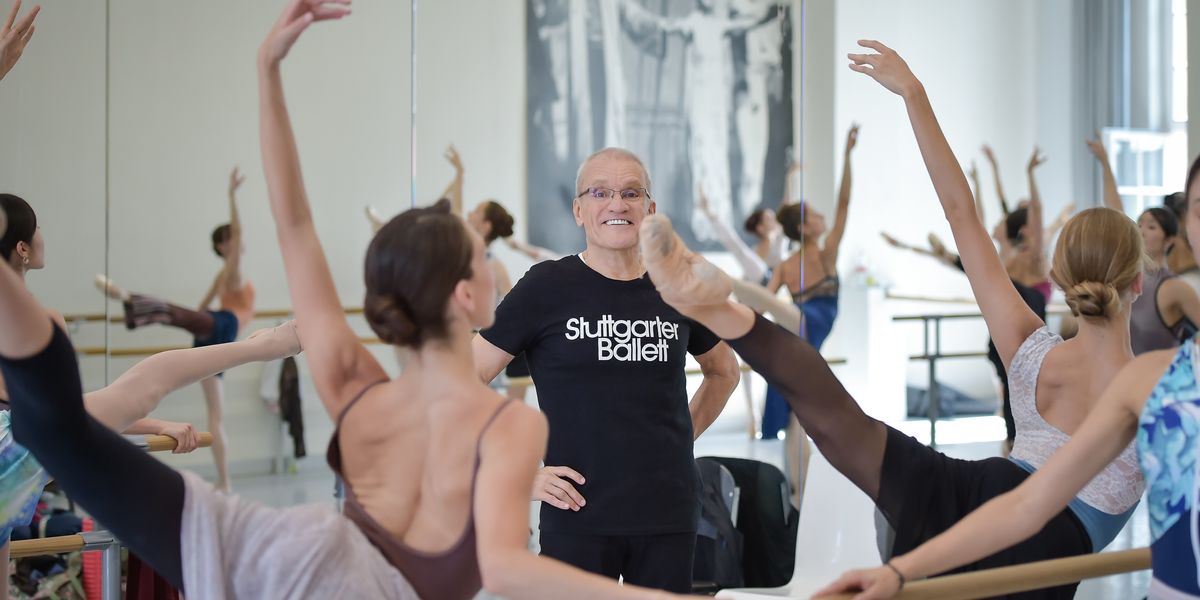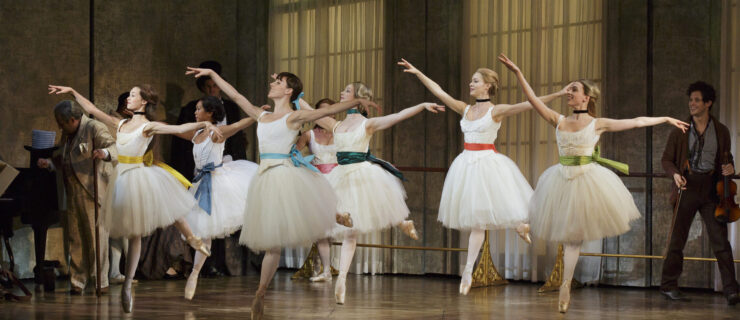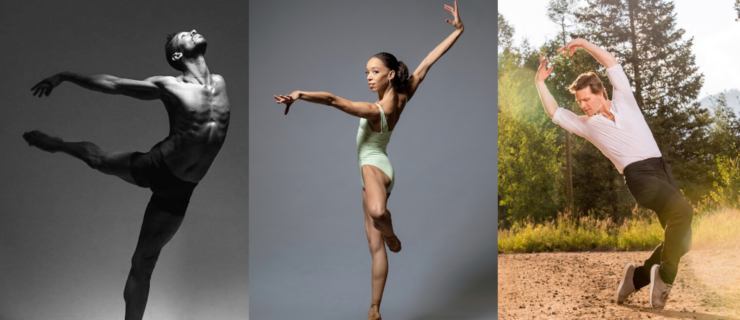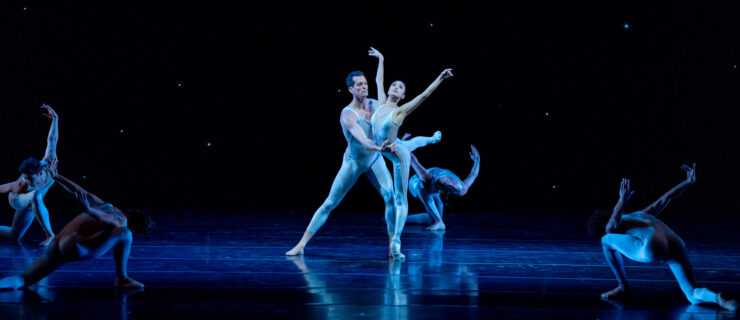"It's a Dream to Work Here": After 22 Years, Reid Anderson Steps Down from Stuttgart Ballet
Stuttgart Ballet artistic director Reid Anderson will be the first to admit that his company loves a good party. “We celebrate quite a lot here,” he says. Indeed, there’s much to celebrate this week in the industrial German city famous for Porsche and Mercedes Benz: after 39 years at Stuttgart Ballet—17 as a dancer and 22 as artistic director—Anderson is retiring. And the company is giving him a grand, 10-day send-off. A Reid Anderson Celebration starts Friday, July 13 and continues through July 22, with a different event almost every night. The festival includes the film premiere of John Cranko’s Romeo and Juliet, full-length performances of Christian Spuck’s Lulu. A Monstre Tragedy and Cranko’s Onegin, three mixed-repertory evenings, a one-man show starring Anderson himself, and a star-studded farewell gala.
Hired into Stuttgart Ballet by legendary choreographer John Cranko at 19, the Canadian-born Anderson rose to become a principal dancer. He then directed Ballet British Columbia and the National Ballet of Canada before returning to take the helm of Stuttgart Ballet in 1996. He is leaving behind an impressive legacy: a diverse repertoire that includes 112 world premieres, internationally acclaimed dancers (Alicia Amatriain, Friedemann Vogel and Jason Reilly to name a few), a new building for the John Cranko School, a diaspora of alumni now choreographing or leading companies, and a 94 percent audience attendance rate. I spoke with Anderson over the phone last month to reflect on his career and to see what’s next for him.
Why He’s Leaving Now

A model of the new John Cranko School. Photo by Ralf Grolms, courtesy Stuttgart Ballet.
Anderson started planning his retirement three years ago. “I’m getting on to 70 now and I’d like to have more time for myself and my partner,” he says. “My whole life has been woven into the fabric of Stuttgart Ballet, ever since I joined as a dancer. Also, I felt I had done everything that I could do.”
One major goal has been to build a new state-of-the-art home for the John Cranko School, which has produced over 60 percent of the company’s dancers. “It took me 20 years,” he says, but construction on the new facility began in 2015. It will officially open in 2019.
Stuttgart Ballet associate artistic director Tamas Detrich, a former principal with the company, will succeed Anderson as director this September. But while Anderson is looking forward to some R and R, “I have a lot to do, because of the Cranko work,” he says. “I’ll still be teaching and going around the world, but now I don’t have to fit it into a crevice. I can do what I want to do, not just what I have to do.”
On His Mentor, John Cranko

Alicia Amatriain in John Cranko’s “Onegin.” Photo courtesy Stuttgart Ballet.
Cranko hired Anderson in 1969, right before the fledgling Stuttgart Ballet’s first tour to New York City brought it international acclaim. His leadership style has influenced Anderson “in every possible way,” he says. “The moment I met John, I had that feeling of the hairs standing up on my neck. A lot of people see him as a great choreographer, but he was also a great director. He was very easy to talk to and open; he really knew what he wanted in his dancers. Also, my partner Dieter Graefe was John’s secretary and then became general manager. He was living with John at that time, so I was party to everything and soaked it all up: How do you handle dancers, how do you handle situations? He was a great mentor for me, even though I didn’t know it at the time.”
Staging Cranko’s ballets both at home and for companies abroad has been a mission for Anderson. “My job has been to be an eternal lamplight, to keep his work alive.”
On His Dancers

Anderson with principal dancer Friedemann Vogel. Photo by Bernd Weissbrod, courtesy Stuttgart Ballet.
Anderson says he’s never been interested in buying talent from the outside. “Most of my principals have come right through the company. The fun for me is bringing people up through the ranks—I’ve known many of them since they were teenagers, 10 years old even.”
He’s also encouraged his dancers to guest internationally. “I almost do back-flips and fire batons and certainly cartwheels to make it work. I’ll even change casting here if necessary. Because their career is really short and they’re in Stuttgart—not everybody comes here unless you’re picking up a car. Everywhere they go, they take Stuttgart Ballet with them, like a postcard.”
Why So Many Choreographers and Directors Come Out of Stuttgart
Since 1961 the company has closely collaborated with The Noverre Society, an independent organization based in Stuttgart that nurtures young choreographers and presents their work. (John Neumeier, William Forsythe and Jiří Kylián, all former Stuttgart Ballet dancers, got their start there.) Under Anderson’s watch, choreographers like Marco Goecke, Christian Spuck and Demis Volpi have benefitted from this unique collaboration.
“When I became director I really wanted to make the school a part of Stuttgart Ballet,” says Anderson. “When people came up through the school who had choreographic interest, I would encourage them to do Noverre. And if they had talent I might take a small piece—a pas de deux, a trio—into the company. The beauty of Stuttgart is that we have three theaters: a chamber theater, a playhouse and an opera house. So they could start with a small commission in the chamber theater and then do something bigger with composed music, each time a bit more, until they found their legs to do something in the opera house.”
Anderson has also made an effort to mentor potential leaders. “I find that so many dancers get directorships because of who they are, but they don’t really know what you need to know to direct,” says Anderson. “So when I saw dancers around me that had ‘it’—the intelligence, the eye, that they could project their egos into other people—I would tell them that I believed they could be a director someday, and encouraged them to talk to me, to watch what I do.” Six Stuttgart alumni—Spuck, Sue Jin Kang, Bridget Breiner, Ivan Cavallari, Filip Barankiewicz and Eric Gauthier—are currently directing companies.
About That 94% Audience Attendance Rate…

Jason Reilly and Elisa Badenes in John Cranko’s “Initials R.B.M.E.” Photo courtesy Stuttgart Ballet.
“Stuttgart has always been famous for a few things: Cranko, Porsche, Mercedes and the public,” says Anderson. “The public adores this company. You can sell out an evening with five new ballets by five young choreographers. In North America I used to have to do ‘the menu,’ with a light starter piece, a challenging ballet in the middle and then a ‘dessert’ with costumes and sets so that the audience would stay to the end. Here I don’t have to do that. We’re always totally sold out because we have this extraordinary public that is so curious about what’s next. They don’t care what the critics write, either. It doesn’t have to be a smash, but interesting would be good.”
How He’s Seen the Dance World Change

Anderson teaching class. Photo by Ulrich Beuttenmueller, courtesy Stuttgart Ballet.
“I’ve seen in my lifetime an extraordinary change in dance,” says Anderson. “When I was young, there was modern dance and there was classical dance and never the twain shall meet. Nobody ever talked about movement quality. If you could do the chassé pas de bourrée double tour and you could lift the girl—well, you did! You’d smile or cry or look angry and that’s pretty much it. Then people like Glenn Tetley, who I worked with a lot, started bringing classical ballet and modern together. I think ballet is now coming from a much more visceral, very inside place: opening yourself up and showing the public what’s inside.”




